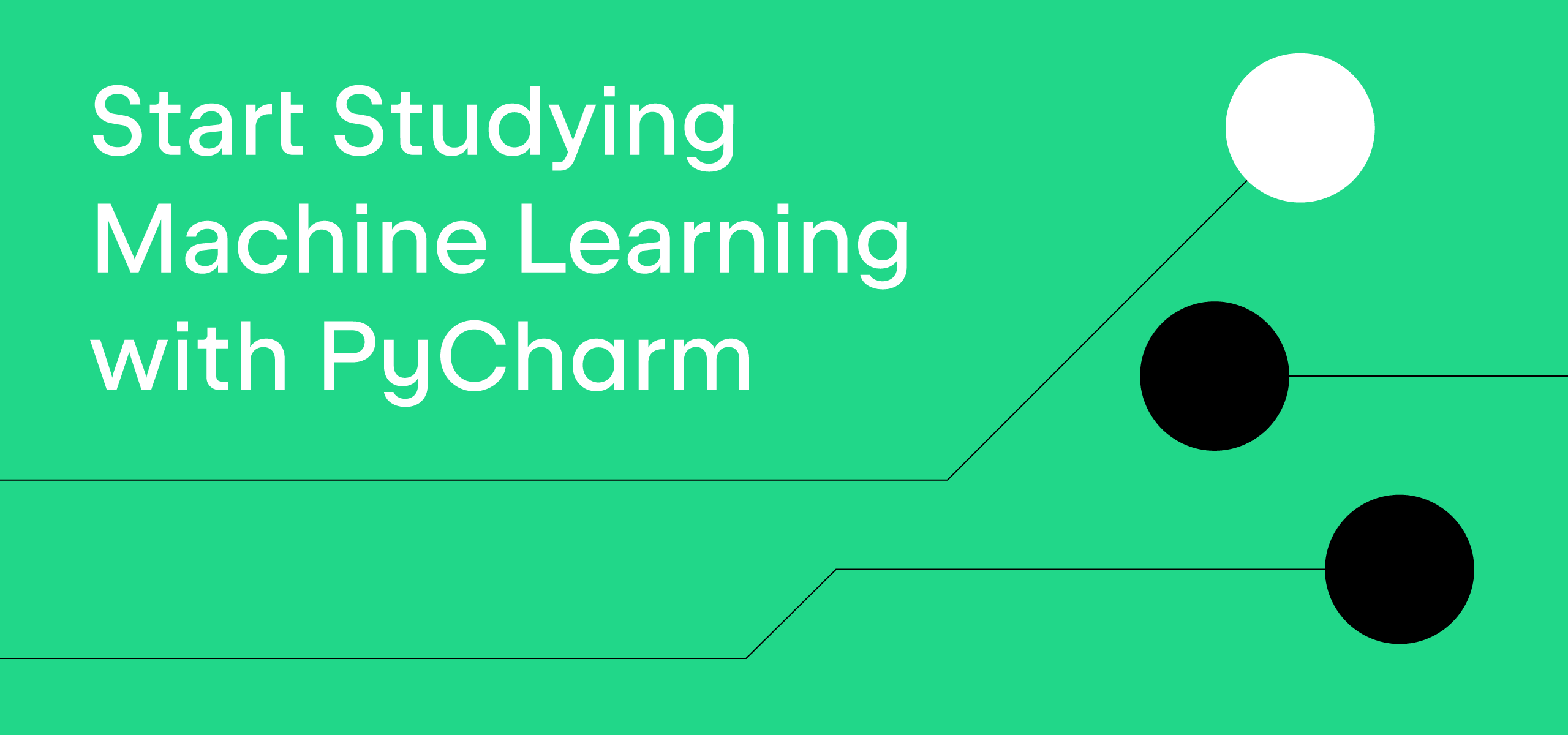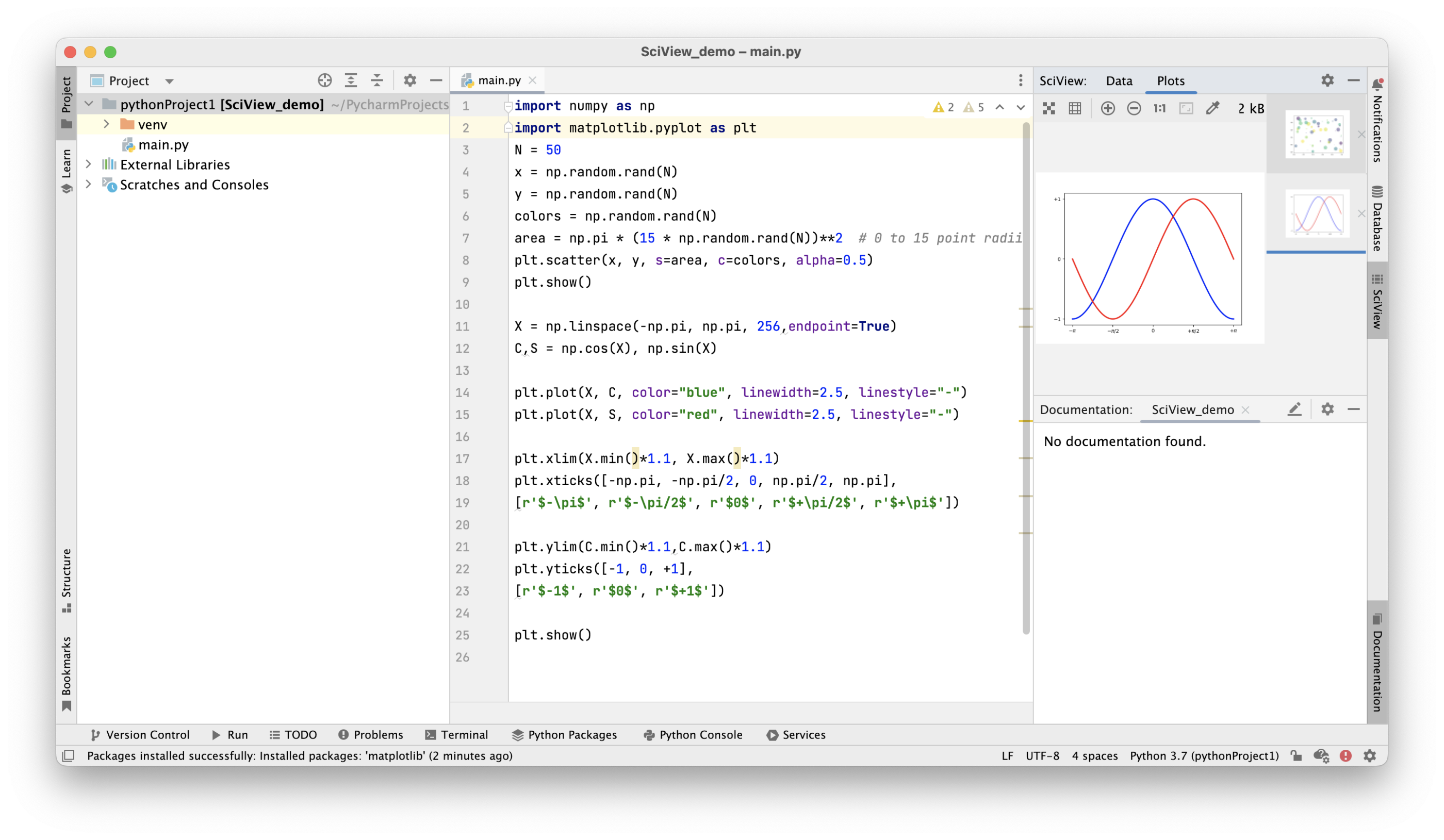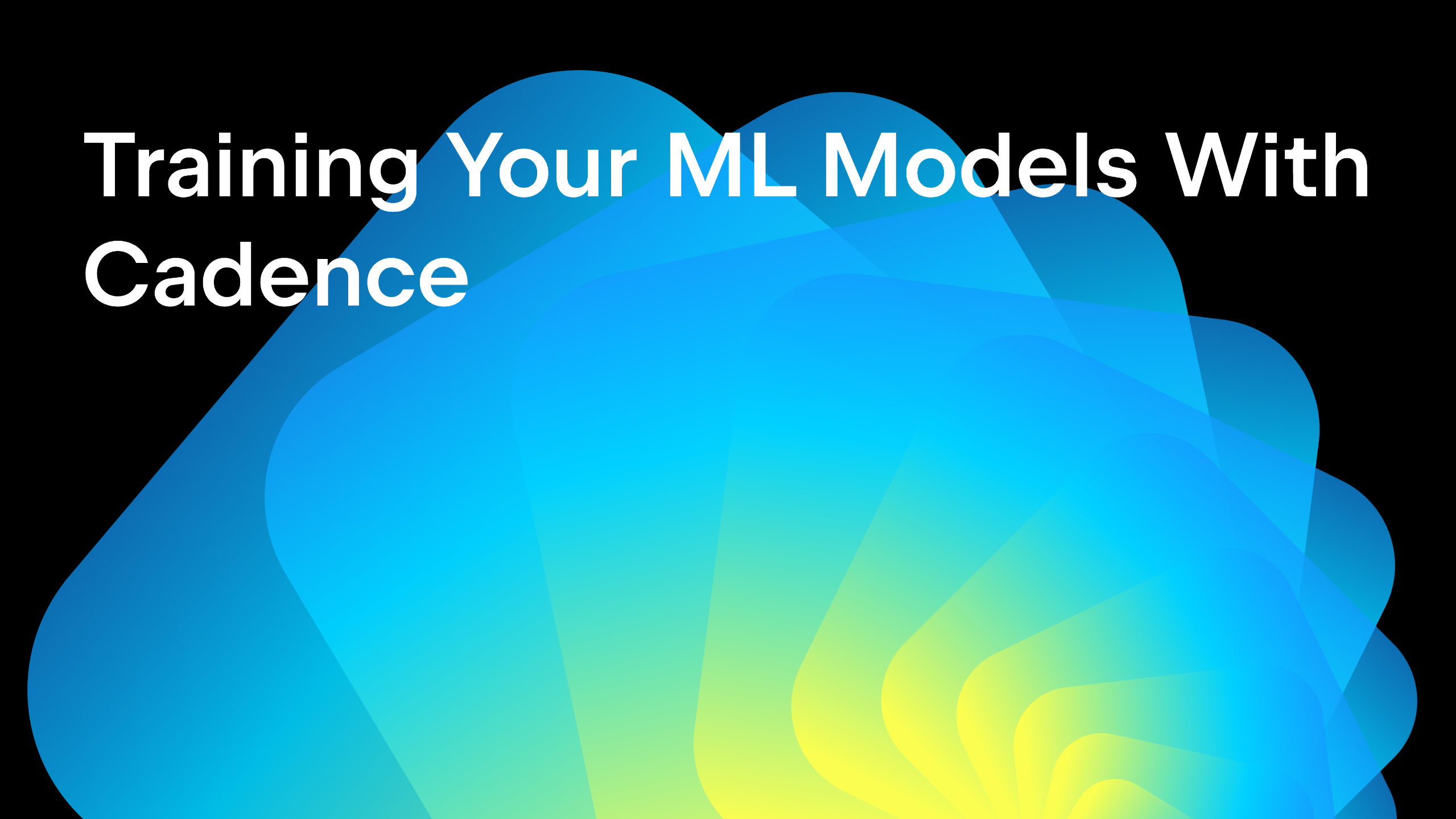Start Studying Machine Learning With PyCharm
What is machine learning, and why does it matter?
Machine learning (ML) is a subfield of artificial intelligence that studies the capability of machines to imitate intelligent human behavior. Artificial intelligence systems are used to perform complex tasks in a similar way to how humans solve problems.
You might not notice its presence, but machine learning is all around us: from a predictive text on your smartphone and chatbots in your favorite messaging apps to recommended posts in your social media feeds and show suggestions on your streaming services.
ML is one of the most exciting and dynamically developing branches of Computer Science, as well as an attractive career choice. All signs indicate that this branch of Computer Science will only continue to grow rapidly in the future. So why not start studying machine learning now?

Why is Python so good for machine learning?
Whether you just started learning Python yesterday or are already a skilled Python user, we have some good news for you: Python is one of the most popular programming languages for machine learning.
Here are a few reasons why Python is so good for machine learning:
- First and foremost is its simplicity. Its comparatively simple syntax makes it easy to read, even for Python beginners, which is, in turn, beneficial to machine learning projects.
- It is known for its platform independence, meaning you can run your machine learning projects in Python on Windows, macOS, Linux, and a myriad of other supported platforms.
- As an open-source programming language, Python is also famous for its community support and comprehensive documentation. You can find many sites, forums, and blogs covering machine learning and Python.
- Python achieves flexibility by integrating with systems programmed in other languages, allowing you to build more complex machine learning projects.
- Python has a broad selection of libraries and frameworks for artificial intelligence and machine learning, such as Keras, TensorFlow, Scikit-learn, NumPy, pandas, and more.
Let’s take a closer look at some of the tools helping us build machine learning projects.
What tools are used in machine learning projects?
When it comes to working on machine learning projects in Python, PyCharm is one of the most popular choices. PyCharm Professional offers a great selection of built-in scientific tools, such as a REPL Python console, Conda, and Jupyter Notebook integrations. PyCharm Professional also allows the creation of scientific projects and has a scientific mode that provides support for interactive scientific computing and data visualization.

While the built-in tools above are sufficient for some projects, there are a few additional scientific stack libraries that you can add to PyCharm Professional to multiply your machine learning capabilities.
NumPy (short for Numerical Python) is an open-source Python library fundamental for scientific computing. It supports a variety of high-level mathematical functions and is broadly used in data science, machine learning, and big data applications. With NumPy, you will be able to efficiently perform linear algebra, statistical, logical, and other operations using numerous built-in functions.
pandas (short for panel data) is an open-source, high-performance data manipulation and analysis Python library built on NumPy. pandas focuses on working with Dataframes, whereas NumPy is oriented toward efficiently working with arrays.
This library will be helpful if you are working with tabular data, such as data stored in spreadsheets or databases. Apart from that, pandas offers great support for time series and provides extensive functionality for working with dates, times, and time-indexed data.
Matplotlib is a comprehensive Python library for creating static, animated, and interactive visualizations built on NumPy arrays. It lets you create all kinds of charts and customize them as you see fit.
scikit-learn (also known as sklearn) is an open-source data analysis Python library built on NumPy, SciPy, and Matplotlib. scikit-learn is focused on machine learning and statistical modeling tools, including classification, regression, clustering, and dimensionality reduction that form the basis for many machine learning technologies. Sklearn is perhaps the most useful and robust library for machine learning in Python.
These libraries are not included in the standard Python library, but you can easily install them using pip, a package installer for Python.
After adding these tools to PyCharm Professional, you’ll be fully equipped to start building your own advanced-level machine learning projects.
How to create your own neural network
If you feel like you are not yet ready to start building your machine learning projects from scratch in your IDE, consider the First Glance at Data Science track on JetBrains Academy, a hands-on platform for learning to program. Focused on project-based learning and integrated with selected JetBrains IDEs, including PyCharm, JetBrains Academy provides you with real-life programming experience as you learn a new language or technology.
In the First Glance at Data Science track, learners can get an overview of machine learning, familiarize themselves with typical ML tasks, and get hands-on experience with some classic ML algorithms by completing beginner-friendly projects.
The First Glance at Data Science track is currently under active development, so any feedback is highly appreciated!
Whether you decide to start with salary prediction algorithms, walk in an astrophysicist’s shoes by studying the properties of compact groups of galaxies, or even finding and training the best possible model for the classification of handwritten digits, JetBrains Academy will support you as you take your first steps in machine learning.
After you’ve covered the basics, go ahead and move on to the Neural Network from Scratch project. In this project, you’ll train a very simple but fully connected neural network. You’ll create the necessary metric functions and provide the custom feedforward and backpropagation methods and functions – all done by hand. It might look too challenging at first, but fear not – the curriculum has all of the information you need to complete the project.
With JetBrains Academy integration in PyCharm, you can work on the Neural Network from Scratch project right in the IDE, allowing you to use all of the IDE functionality to the fullest. Features like syntax highlighting, auto-completion, automatic code formatting, and debugging will definitely help while building your machine learning projects.

With PyCharm and JetBrains Academy, you’ll develop a deep understanding of fundamental ML techniques, as well as get practical experience with NumPy, pandas, Matplotlib, and scikit-learn.
Join us on the journey into the world of machine learning, and feel free to share your experience with us anytime, here in the comments or on Twitter.
Happy (machine) learning!
Subscribe to PyCharm Blog updates









